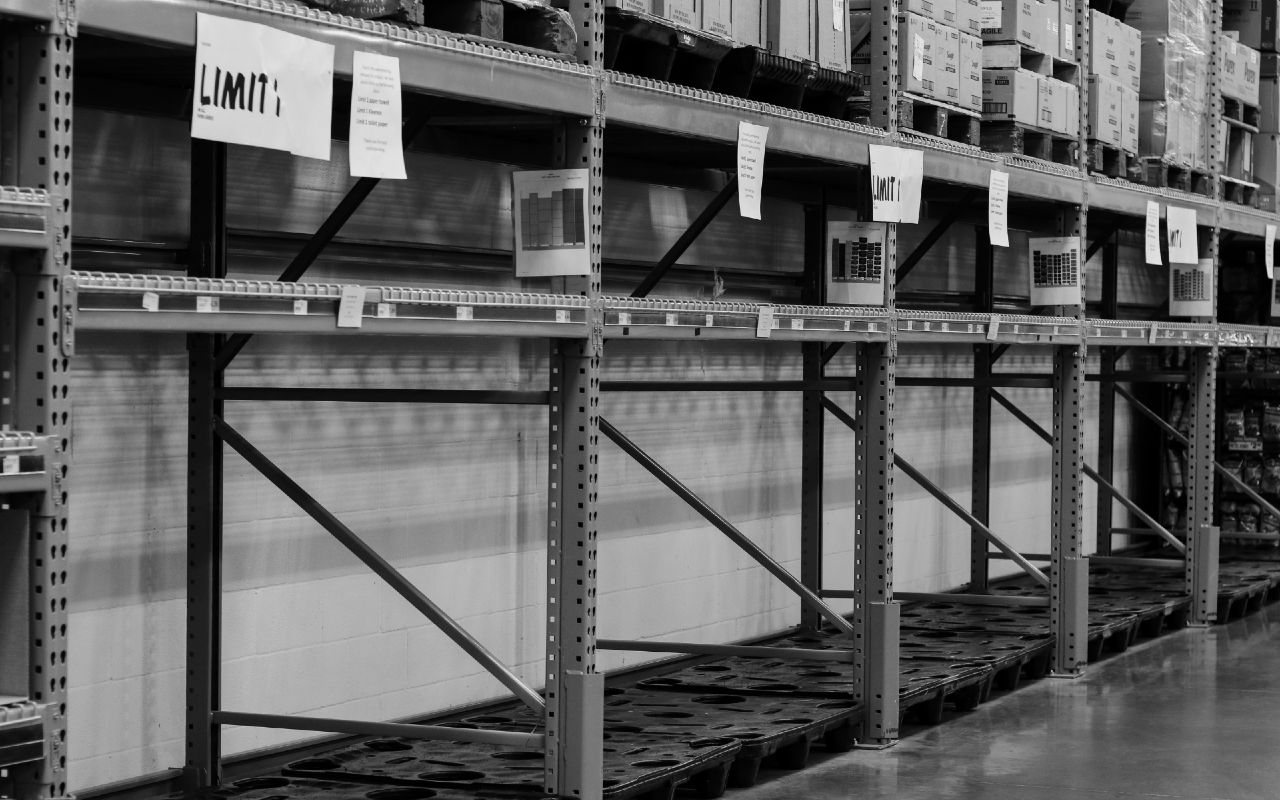In the last four months we’ve been sailing in uncharted waters.The coronavirus has infected 3.8 million people, over 265,000 deaths. The scale of this crisis is unprecedented, there’s no blueprint as to how to manage this. There’s mayhem in the market.
The virus is now considered a pandemic worldwide. A global recession is imminent. The coronavirus pandemic could cost the global economy US$4.1 trillion. The International Monetary Fund predicts the worst downturn since the Great Depression.
Globally consumers are in a panic. From shortages of face masks, hand sanitisers, toilet paper, to empty supermarket shelves, supply shortages have highlighted weaknesses in how goods are sourced, distributed, and stored. The outbreak is already costing businesses millions of dollars in revenues and profits, serious consequences in the global market causing severe financial repercussion.
In a survey conducted between February 22nd and March 5th by the US based Institute for Supply Management, almost 75% of the 628 US businesses surveyed had experienced supply chain disruptions as a result of the outbreak. In this same survey, 57% of respondents said they were facing longer lead times for orders with suppliers in China.
Production disruptions have largely affected household and hi-tech goods, and textile industries where China plays a core role in the global supply chain. These disruptions already had an adverse effect on the global supply chain as companies struggle to find alternative suppliers during the continued US-China trade war.
Production output of automobile manufacturers in China has dropped by 40%. Global auto production could fall by 1.4 million this year. As an indirect effect, manufacturers within China and abroad suffered from reduced production output from core industry suppliers such as plastics, parts, chips, and hi-tech goods. Closure of manufacturing facilities in China has had far-reaching consequences for the global auto industry. Hyundai, Kia, Nissan, GM, Jaguar, Land Rover, etc. had to suspend production in Korea, Japan, US and UK in February to March, only recently starting partial production in some countries.
The virus outbreak and subsequent lockdowns around the world has hindered daily business operations. Longer lockdowns will have a severe impact on labour, employment and household incomes. Because supply chains are complex and intertwined, the virus has thrown it into a disarray.
On one side you have many suppliers, on the other side you have the consumers, and in-between you have endless chains of interactions between them. Because of this complexity, it’s easy for companies to totally lose visibility and transparency into their own supply chains. Many supply chain organisations are in crisis management, assessing impacts and response on an hourly basis.
To improve efficiency and ensure higher return to scale, companies along the supply chains specialise in finer parts of the production process. It is not uncommon for supply chains to have six tiers or more. Automotive, electronics, and even the apparel industry have long complex supply chains where parts are produced by multiple suppliers before a product is made and delivered to customers.
Hi-tech goods are one of the most-affected industries as China remains the world’s largest producer and exporter of components. Apple is among several multinational companies that have been affected. Apple shut its corporate office, 42 stores and contact centres across China in early February, by end February, 29 were open, and by end Mar, 38 of 42 stores were open. The supply chain disruption also affected operations in other countries. China is the largest manufacturer of iPhones, thus factory closures have hurt Apple’s production volumes.
Apply, Google and Microsoft have looked to move some hardware production from China to places including Vietnam and Thailand. Japan has earmarked US$2.2 billion of its economic stimulus package to help its manufacturers shift production out of China.
Besides manufacturers, air transport has also been impacted as major international airlines have stopped their flights to China, Asia and Europe. Cancellation of air routes to these countries is creating an adverse effect on global supply chains.
Air transport remains among the key transportation modes for fragile, perishable or high-value goods which require fast delivery. Disruption of air travel has largely impacted chemical products, pharmaceuticals, hi-tech goods and machinery industries. The disruption has immediately affected lean supply chains and especially the ones based on speed.
Travel bans, city and country lockdowns, has companies scrambling to expedite shipments. These closures led to supply shortages. The ramifications from the outbreak has impacted business greatly. It’s already hit the travel, tourism, entertainment, and events industries across the globe.
The border closure between Malaysia and Singapore in the middle of March led to panic among consumers, companies and Malaysians working in Singapore. There was a rush to secure food shipments from Malaysia, companies had to find accommodations for their labour force to ensure business continuity. Prices for various staples initially spiked. With borders not completely opened, supply chains are being stretched thin.
Asia is at the heart of global supply chains. Of the top nine container ports in the world, seven are in China, one is in Singapore, and one is in South Korea. 4 of the world’s busiest air routes are in ASEAN. All three countries are now deeply hit by the coronavirus outbreak. Markets linked to Asia are particularly exposed, including the two largest — The Asia-Europe and Asia-North America, which together account for more than 40% of global trade traffic.
Collectively, about a third of the world’s economy and financial markets is being affected, and the outbreak is still ongoing. It’s impossible now to quantify the overall impact as the crisis is only beginning to unfold. The economic aftermath is expected to last at least two years, recovery varying industry to industry. However, if the air travel bans remain prolonged, businesses might start feeling the shortage of goods such as pharmaceuticals, as accumulated stocks deplete.
The global supply chain has evolved since the SARS outbreak in 2003, but China’s role in global industry increased perhaps 10 fold since then, thus the final impact on industries will depend largely on companies’ capabilities to find alternative suppliers and the success of governments across the world to contain the virus outbreak.
Rethinking Supply Chain Practices and Policies
No doubt we’re in a crisis but this is also an opportunity to unlearn and relearn. Now is the time to turn crisis management into risk management. It’s time to rethink procurement as we know it, one that does not depend on one location, one supplier to maintain business continuity. Manufacturers should evaluate scaling up within their country of origin, identify and develop alternative production hubs and multiple supply sources.
To be resilient, companies must rethink their supply chain policies and practices, and develop a comprehensive proactive model. They should first conduct a supply chain vulnerability audit. Next, formulate a supply chain emergency plan. Identify alternative suppliers and audit these supplier’s own suppliers. They must invest in time, money and resources in building a resilient supply chain.
Organisations can develop a detailed supply chain map adopting AI risk evaluation tools. This will allow them to detect chokes and warning signs of possible disruptions, perform operational risk assessment of critical business functions, set up contingency plans based on scenario planning exercises that can respond by shifting production or supply source. Without this detailed map it is difficult to know the vulnerable links.
Risk evaluation tools such as machine learning can find patterns indicating risk or opportunities in macroeconomic, regional and geopolitical health, exchange rate and other data. We must stop being complacent. In the short term, some companies will have cash flow issues, the resilient ones will survive and even gain market share, eg online grocery shopping business, food-delivery services, e-learning, video conferencing software, telemedicine business. This may also be an opportunity for drone deliveries to gain ground, like China and many European countries are using drones to deliver medicines.
The ongoing US-China trade war has led to some companies diversifying their supply base. Many have shifted manufacturing to Vietnam, Myanmar, Bangladesh, even to Africa. As tariffs increased, companies like Samsung, Nike, and Adidas have shifted production into Vietnam from China.
This crisis should, must, speed up the trend, with more companies reassessing their market positions, vulnerability and resilience. No more sitting on the side lines, it’s time for action, time to rethink the China exposure. Relying on China has proved to be an expensive lesson.
However, it’s easier said than done as switching suppliers and ensuring the right quality and cost is challenging. It’s a long-term strategic process, the objective is to stay ahead of the curve, being prepared and resilient.
Diversification and uncorrelated sources of supply base is the key, so when one source falls, a tier two or three alternatives may still be operational. In other words do not put all your eggs in one basket or buy the eggs only from one farm.
The crisis is a game changer, ruled with unfamiliarity and uncertainty. Responses by businesses and governments have been improvised, each learning by the day. It’s been a costly experience, but lots of lessons to be learnt. No risk management strategy could have anticipated nor equipped us with the tools to handle the scale of the coronavirus in the short run.
With the rapid spread of the virus globally, extended lockdowns, a slower pace of normalisation, interconnecting businesses embroiled in the same predicament, with no vaccine in sight, diversification of supply base right now is of little help.
However, we’re in a better position than we were when SARS hit us. We have more options now and we have an opportunity to build futuristic contingencies that will ensure we’re more prepared to manage the risk.
We must act now.
Change Or Evolve?
A New Normal – Is The Best Yet To Be?
Shaun Jayaratnam is an international sales and business development professional specialising in the strengthening of industry and the establishment of operations throughout Africa, Russia, East Europe, Middle East and APAC. Follow him on LinkedIn.




















Guruprasad
16th May 2020 at 10:10 am
GOOD WRITE UP Shaun.Keep Rocking.